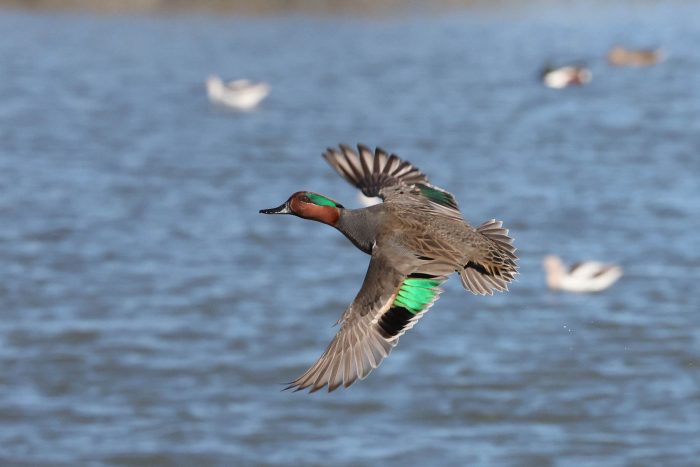Green-Winged Teal
Anas crecca
The green-winged teal is a small dabbling duck with iridescent green patches on its head and wings. It lives in tidal marshes and wetlands throughout the Chesapeake Bay and its rivers from autumn through spring.

